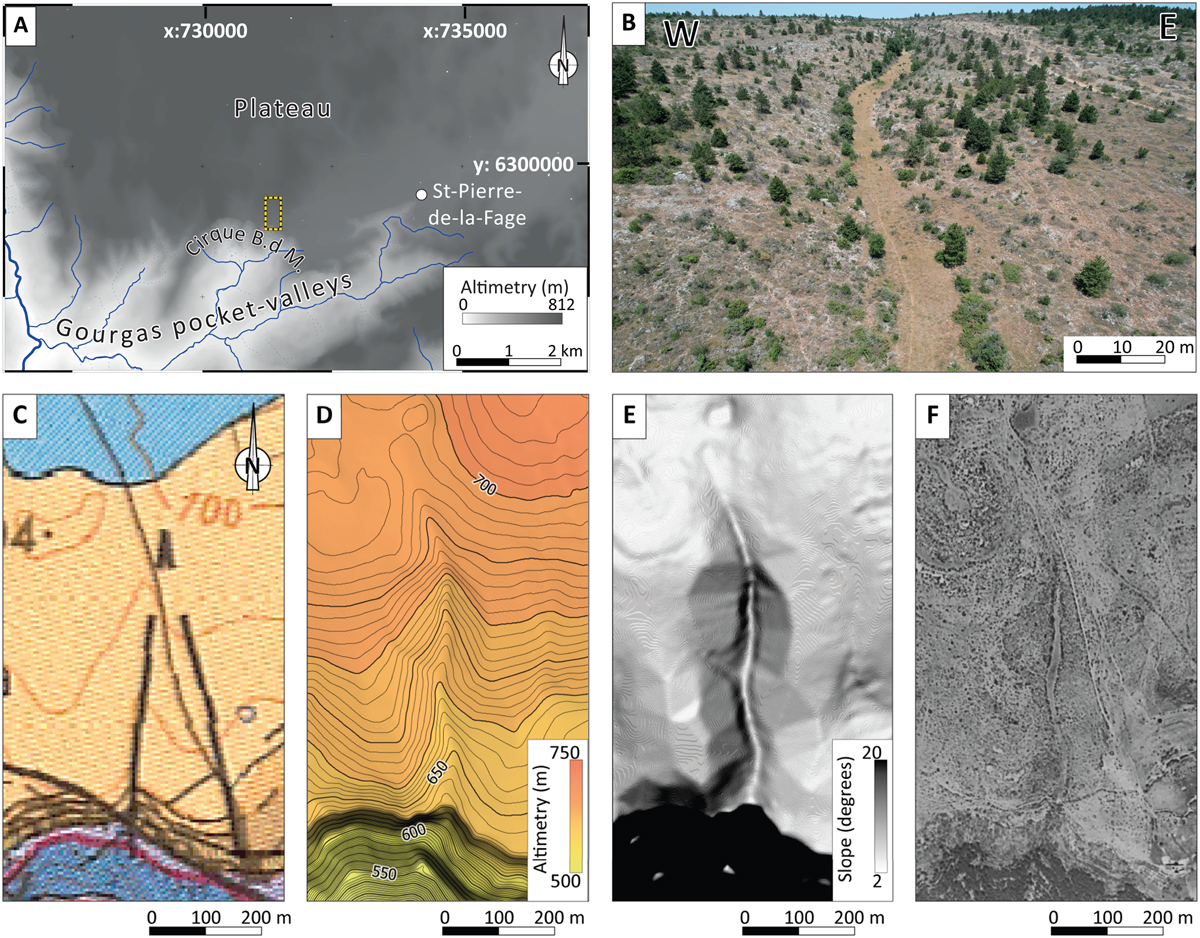Fig. 6

Download original image
A. Digital Elevation Model (DEM) of the study area (location shown in Figure 5) with a 1-m pixel resolution, sourced from the IGN online facility. B to F. Various views of the same alteration corridor identified on the field, which were used to establish a set of morphological criteria (location shown in A). B. Drone oblique view of a linear dry valley not associated with an upstream watershed on the surface. C. On the geological map (Alabouvette et al., 1988), this same feature is interpreted as a fault, although it does not offset beddings. D. On the DEM, it can be described as a linear furrow, and where it intersects with the scarp, it forms a concave notch. E. The slope model highlights the contrast between the steep scarp and the flat bottom of the dry valley. F. In historical aerial photographs, it appears as a grassy meadow, while the steep edges display visible bedrock and bushes.
Les statistiques affichées correspondent au cumul d'une part des vues des résumés de l'article et d'autre part des vues et téléchargements de l'article plein-texte (PDF, Full-HTML, ePub... selon les formats disponibles) sur la platefome Vision4Press.
Les statistiques sont disponibles avec un délai de 48 à 96 heures et sont mises à jour quotidiennement en semaine.
Le chargement des statistiques peut être long.




